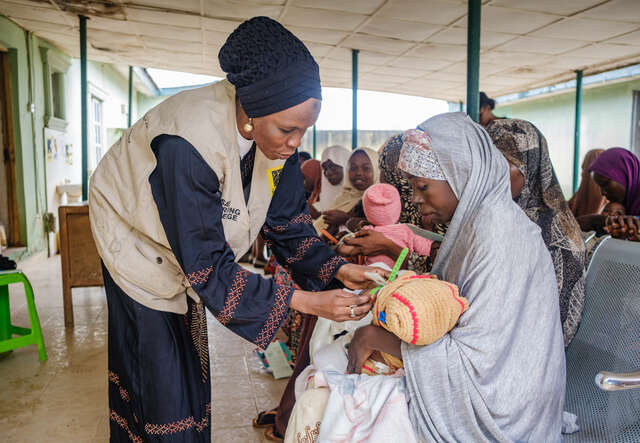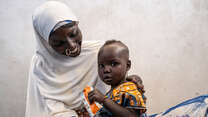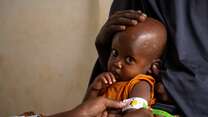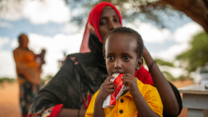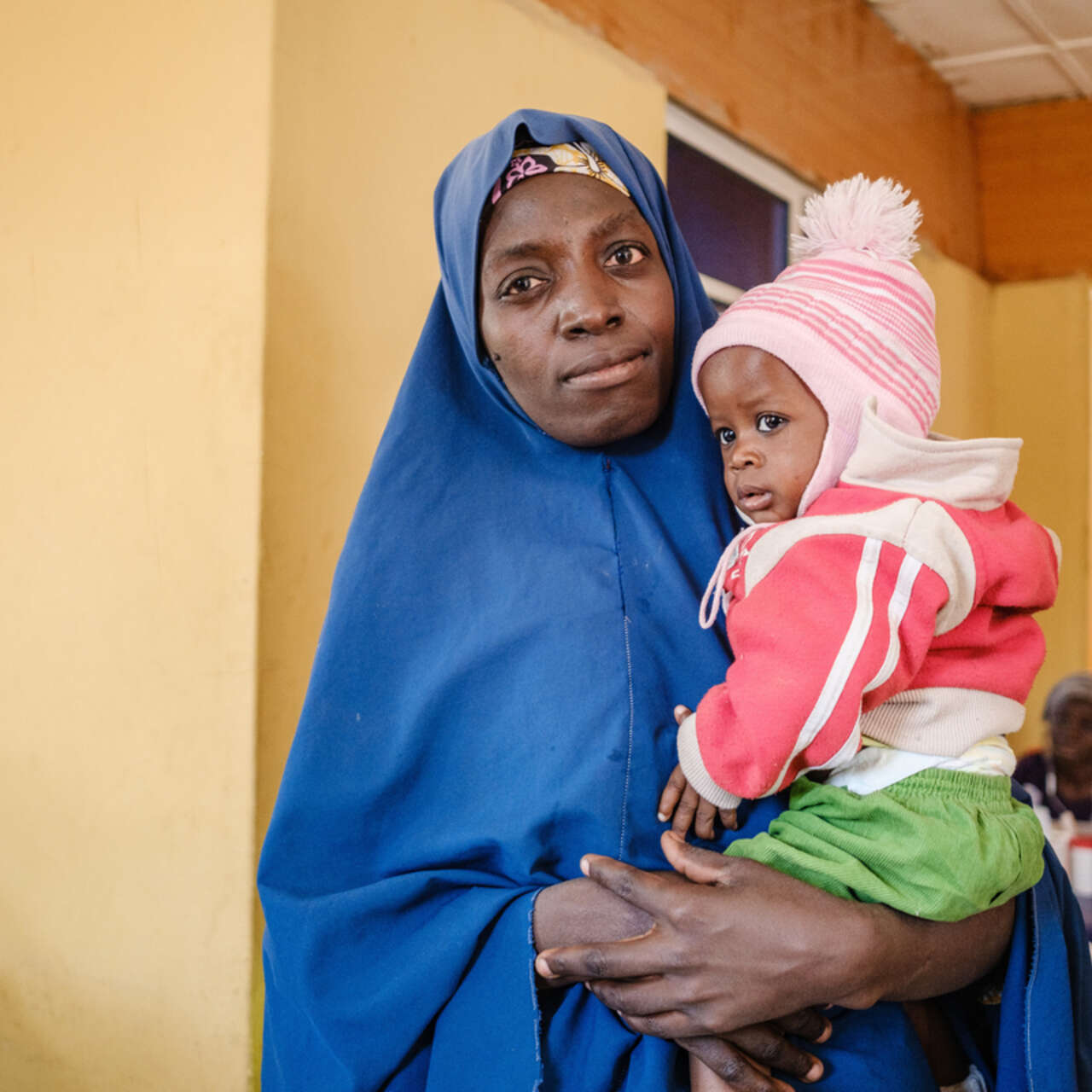
In northeast Nigeria, particularly in Borno State, communities are facing a growing malnutrition crisis which is severely threatening the health and well-being of the population—especially for children.
A deadly combination of violence, climate shocks and rising food prices have all severely undermined families’ access to essential food supplies. Read on to learn more about the situation in northeast Nigeria, and how the International Rescue Committee (IRC) is supporting affected communities.
Why are malnutrition rates so high in Nigeria?
For more than a decade, armed conflict in northern Nigeria has forced countless families from their homes, disrupting their ability to farm and earn a livelihood. This has left them without the resources needed to sustain themselves.
Adding to this challenge, the worst lean season in years is preventing communities from meeting their essential needs. Recent severe flooding is anticipated to exacerbate the already critical crisis of severe acute malnutrition. This disaster devastates food supplies, disrupts agricultural activities, and displaces families.
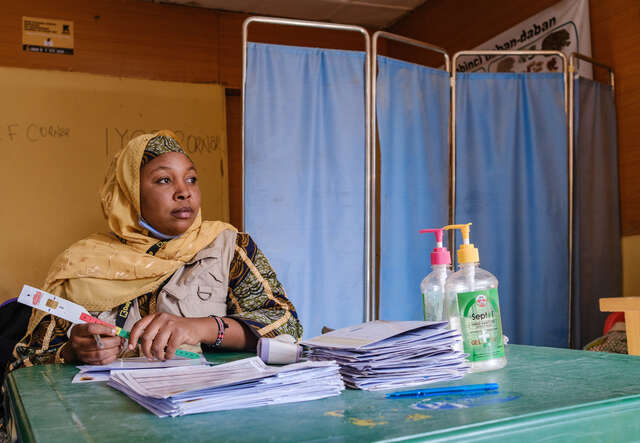
Maryam Aliyu Umar, 34, serves as an outpatient nurse at the IRC-operated Sulumburi Health Clinic in Maiduguri. She has witnessed firsthand the profound effects of malnutrition on children in the area, many of whom have been displaced from neighboring villages and have endured significant hardships since losing their homes.
“The clients who come to this hospital have been immensely affected by food insecurity because they don't have a place to farm,” explains Maryam. “The number of children who suffer from malnutrition is increasing. If you come to the hospital, you'll see that we aren't even able to provide sitting space for the women.”
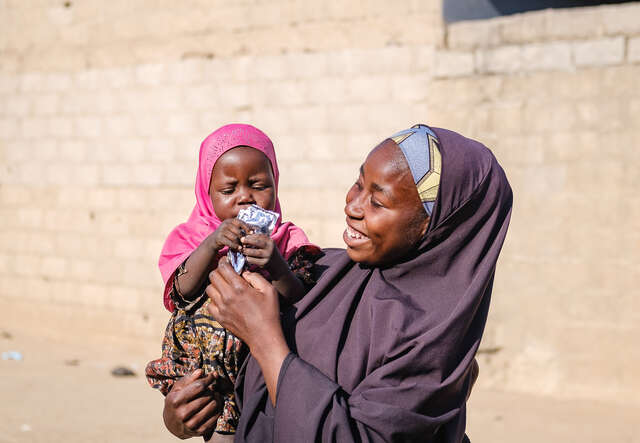
Fatima Umar, a 25-year-old seamstress, and her daughter, Zara, were forced to flee their home due to the constant threat of armed groups who frequently targeted the local area, kidnapping young girls.
“After we left our town, we were really hungry, there wasn't sufficient food for my daughter, and I didn't have any business that I could use to assist myself and fight off malnutrition,” says Fatima. “Zara was severely malnourished, she was frail and she couldn't even crawl because of the weakness.”
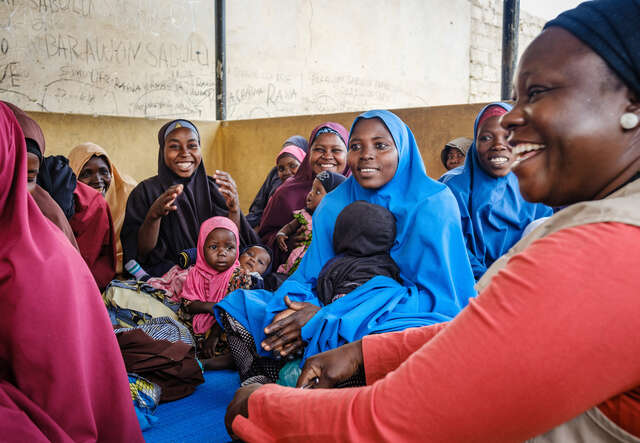
When Fatima’s daughter was initially admitted to the IRC clinic, she was underweight and exhibiting significant symptoms. After seven weeks of dedicated treatment and support, little Zara reached a healthy weight and was ready for discharge.
How is the IRC working to treat malnutrition in Nigeria?
In Nigeria, the IRC is tackling acute malnutrition with teams working across 7 hospitals and 65 community facilities. Across 2023 a total of 125,372 children under the age of 5 received treatment from our teams.
Using a new approach, community health workers, embedded in local communities, are also able to diagnose a child using a color-coded, numbered measuring tape, and treat them using a nutritional peanut paste.

In areas where access and transportation are limited, these innovations have been essential. The IRC continues to advocate for simplified approaches that allow organizations to treat more children by integrating the treatment for severe acute malnutrition (SAM) and moderate acute malnutrition (MAM) using the same resources, maximizing impact and expanding access for those most in need.
This streamlined method, proven to help over 90% of malnourished children recover within weeks, is easier for health workers and helps prevent children from deteriorating into severe malnutrition.
How can I help stop acute malnutrition?
Although a proven treatment for malnutrition is available, there is a critical need for simplified approaches and consistent funding to deliver and sustain these interventions at scale. Currently, an estimated 45 million children worldwide are experiencing acute malnutrition, a condition that not only affects their immediate health but also has long-lasting implications for their development and future potential.
To effectively combat this global crisis, we must prioritize innovative strategies, collaborate across sectors, and secure the necessary resources to ensure that these life-saving treatments reach every child in need.
Donate to the IRC to help us address this and other crises around the world.
